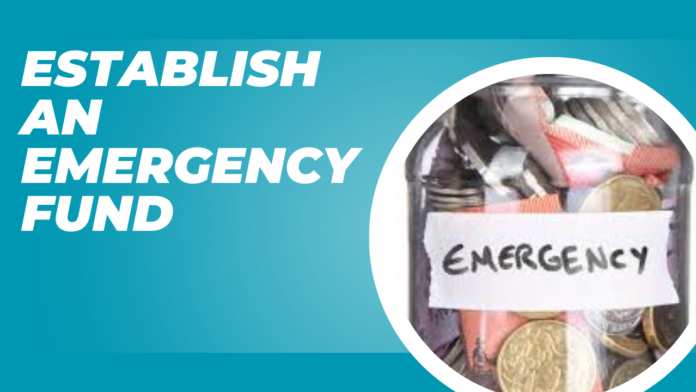Life is full of surprises, and not all of them are pleasant. From unexpected medical expenses to sudden job loss, emergencies can hit when you least expect them. That’s where an emergency fund comes into play—a financial safety net that helps you navigate life’s unpredictable turns without derailing your overall financial health. Whether you’re a veteran looking for the best money market accounts for an emergency fund or a student needing tips on saving money for unforeseen situations, establishing this fund is crucial.
Building an emergency fund isn’t just about stashing away cash; it’s a proactive approach to managing risk in your finances. It offers peace of mind knowing that you’re prepared for whatever might come your way—whether it’s a blown tire on the highway or urgent vet bills for your beloved pet. Let’s dive deeper into why having an emergency fund is essential and how you can effectively build one tailored to your unique needs!
Understanding the Importance of an Emergency Fund
An emergency fund acts as your financial cushion in times of crisis. It’s not just savings; it’s a shield protecting you from the unexpected.
Life can throw curveballs—medical emergencies, car repairs, or sudden unemployment. Without an emergency fund, these situations can spiral into larger financial problems.
Having this safety net allows you to make decisions without panic. You won’t need to rely on credit cards or loans with high-interest rates when money is tight. Instead, you’ll have quick access to cash that keeps stress at bay.
Moreover, an emergency fund promotes better financial habits and encourages disciplined saving practices. Knowing you’re prepared for the worst allows you to focus on future goals without constant worry about what might go wrong tomorrow.
How Much Money Should You Have in an Emergency Fund?
Determining the right amount for your emergency fund can feel overwhelming. A commonly recommended guideline is to save three to six months’ worth of living expenses. This gives you a solid cushion against unexpected situations, like job loss or medical emergencies.
However, individual circumstances vary widely. If you’re a student or on a fixed income, you might aim for one month’s rent and essential bills as a starting point.
Consider factors such as job stability and dependents in your household. A family with children may require more savings than someone living alone.
Another aspect to consider is your lifestyle choices. A climate emergency fund could be beneficial if you live in an area prone to natural disasters.
Focus on what brings you peace of mind while building that financial safety net tailored specifically for your needs.
Tips for Building and Maintaining an Emergency Fund
Building and maintaining an emergency fund requires strategy and discipline. Start by setting a clear goal for your fund. Determine how much you aim to save, considering factors like job stability and unexpected expenses.
Automate your savings whenever possible. Set up monthly transfers from your checking account to a designated savings or money market account. This way, saving becomes effortless.
Review your budget regularly. Identify non-essential expenses that can be trimmed down, allowing you to allocate more towards your emergency fund without feeling the pinch.
Consider using windfalls wisely—tax refunds or bonuses are great opportunities to boost your savings quickly.
Keep track of your progress; seeing growth will motivate you to stick with it even when times get tough. Staying flexible is key; adjust contributions as needed based on life changes or financial goals while prioritizing this vital cushion.
The Benefits of Having an Emergency Fund
An emergency fund serves as a safety net during life’s unexpected events. Whether it’s a job loss, medical expenses, or urgent home repairs, having funds readily available can reduce stress significantly.
With an established reserve, you’re less likely to rely on credit cards or loans that come with high-interest rates. This financial cushion empowers you to make decisions without the pressure of immediate repayment.
Moreover, an emergency fund fosters greater peace of mind. Knowing you have resources set aside allows for better focus on your day-to-day responsibilities and long-term goals.
It also promotes healthy saving habits. Regularly contributing to this fund encourages discipline and helps instill a mindset geared toward financial security.
Building an emergency fund can enhance your overall quality of life by providing stability in uncertain times while paving the way for future investments or opportunities.
Common Mistakes to Avoid When Establishing an Emergency Fund
One common mistake is setting an unrealistic target. Many people think their emergency fund should cover every potential expense, but that can be overwhelming. Focus on a practical goal instead.
Another pitfall is neglecting to contribute regularly. It’s easy to forget about your fund when life gets busy. Set up automatic transfers from your checking account to ensure consistent growth.
Some individuals also dip into their emergency funds for non-emergencies, like impulse purchases or vacations. This undermines the purpose of having a safety net and could leave you vulnerable in real crises.
Many overlook researching the best savings options available, such as money market accounts or high-yield savings accounts specifically designed for emergency funds. Make informed choices to maximize your returns while keeping your funds accessible.
Creative Ways to Save for Your Emergency Fund
Finding inventive ways to build your emergency fund can make the process enjoyable. Start by setting up a dedicated savings account, like one of the best money market accounts for emergencies. This keeps your funds separate and earns interest.
Consider using apps that round up purchases and save the change automatically. For instance, every time you buy a coffee, those extra cents can go straight into your emergency pot.
Another idea is to participate in challenges. The 52-week challenge lets you save small amounts weekly, gradually increasing it each week until you’ve saved a significant amount by year-end.
Look around your home for items you no longer need. Selling clothes or gadgets online can provide an unexpected boost to your fund.
Set aside windfalls such as tax refunds or bonuses directly into this account without thinking twice about it. Every little bit counts toward that safety net!
Conclusion
Establishing an emergency fund is a crucial step in achieving financial security. Whether you’re saving for unexpected medical bills, car repairs, or even a pet emergency fund, having that safety net can alleviate stress during tough times. The recommended amount varies based on individual circumstances but aim for three to six months’ worth of living expenses.
Building and maintaining this fund requires discipline and strategic planning. Consider setting up a separate savings account or exploring the best money market accounts specifically designed for emergency funds. Avoid common pitfalls like dipping into your savings too often or underestimating your needs.
Creative saving methods can also help boost your fund faster. Automate transfers from your checking to your savings whenever you receive income, or take advantage of windfalls such as tax refunds to jumpstart your goal.
The benefits are clear: peace of mind knowing that you have resources ready when life throws curveballs at you creates stability in uncertain situations. With proper preparation and proactive management, anyone—including students—can build their own version of an american emergency fund tailored to their specific needs.
Remember that every little bit counts when it comes to saving money for an emergency fund. Stay focused on your goals and watch how quickly those contributions add up, providing not just financial support but also confidence in navigating life’s unpredictable moments.


